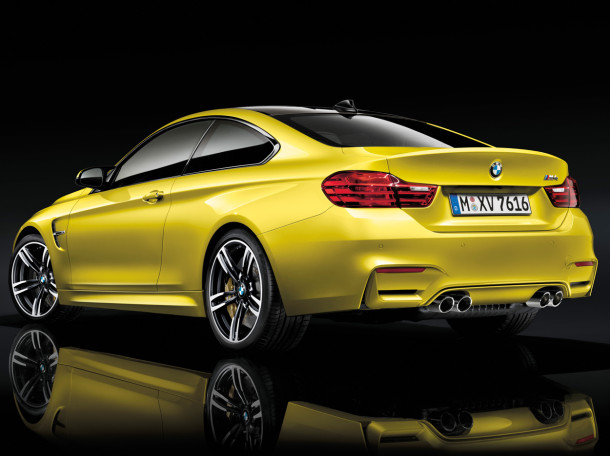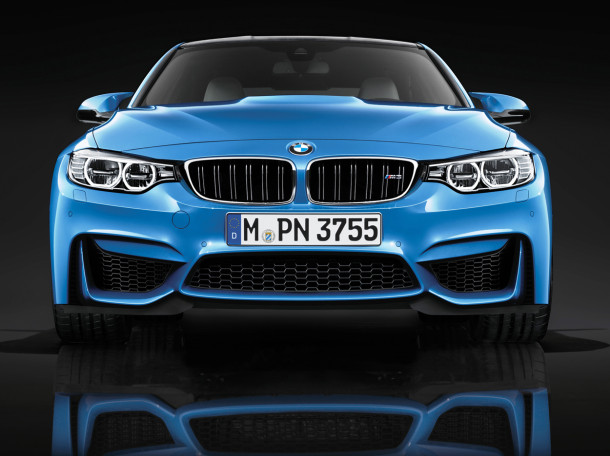Back to six cylinders for new BMW M models

BMW has launched two new models — an M3 Saloon and M4 Coupe — the fifth generation of iconic high performance sports cars from the German carmaker.
In a break from the past, BMW has given the coupe and saloon models individual model names.
Another first is the adoption of a turbocharged engine — the high-revving, three-litre six-cylinder inline engine with M TwinPower Turbo technology. This has been developed specifically, and produces a maximum output of 431hp. Its peak torque of 550Nm is available across a very wide rev range starting at just 1,850rpm, and exceeds the figure recorded by the outgoing M3 by roughly 40 per cent. In spite of this, the new engine also achieves a reduction in fuel consumption and emissions of around 25 per cent.
To maximise dynamic ability and ensure excellent efficiency, a weight loss of over 80kgs has been achieved compared to a comparably equipped predecessor model. Specific weight-saving measures include the increased use of lightweight materials: both models now feature a carbon-fibre reinforced plastic roof.
BMW M engineers have paid particular attention to the car’s aerodynamic performance, and incorporated the latest Active M Differential amongst numerous other technical highlights. During the development process the engineers worked closely with BMW Motorsport’s professional racing drivers, with extensive testing and set-up work carried out on the Nürburgring circuit.
The new M3 Saloon and new M4 Coupe are formed from a host of finely blended elements, all working in perfect harmony to deliver outstanding performance, precision and agility on road and track.
The two models mark a return to the classic six-cylinder inline engine configuration, as used on the second and third-generations of the sports cars.
The new engine sees a slight power upgrade over the previous V8 to 431hp, now delivered between 5,500 and 7,300rpm, with maximum revolutions set at an unusually high figure for a turbocharged engine: 7,600rpm. Peak torque has been increased by roughly 40 per cent to 550Nm, and is maintained over a very wide rev range (1,850–5,500rpm).
The standard sprint from 0-62mph takes both cars just 4.3 seconds with manual transmission, or just 4.1 seconds with the optional M DCT, while the top speed is 155mph (electronically limited). The new powerplant also boasts excellent fuel economy: the combined consumption in the EU cycle is as high as 34mpg and CO2 emissions are as low as 194g/km, an improvement of more than 25 per cent over the previous model’s figures. Regulated pollutant emissions are EU6-compliant.
The standard transmission specified is a six-speed manual gearbox with a robust double-plate clutch. This unit is considerably more compact than its predecessor and also 12kgs lighter. To increase shift comfort, the manual gearbox uses innovative new carbon friction linings in its synchroniser rings. The gearbox blips the throttle on downshifts – previously a feature reserved for the M Double Clutch Transmission – improving the smoothness of the driving experience and helping to enhance stability.
The optional transmission for the M3 Saloon and M4 Coupe is the third-generation M Double Clutch Transmission (M DCT). As well as changing gear automatically, in manual mode it enables ultra-fast gear changes with no interruption in the flow of power. The integrated Launch Control function ensures optimum sprinting performance off the line, producing acceleration figures that would be simply unattainable with the manual gearbox. In addition, the system allows for a range of extra features, including Stability Clutch Control, which opens the clutch when the car is understeering to bring it back into line, and also the selectable Drivelogic modes.
http://www.bmw.co.uk/en_GB/new-vehicles/M/m3-saloon/2013/start.html

